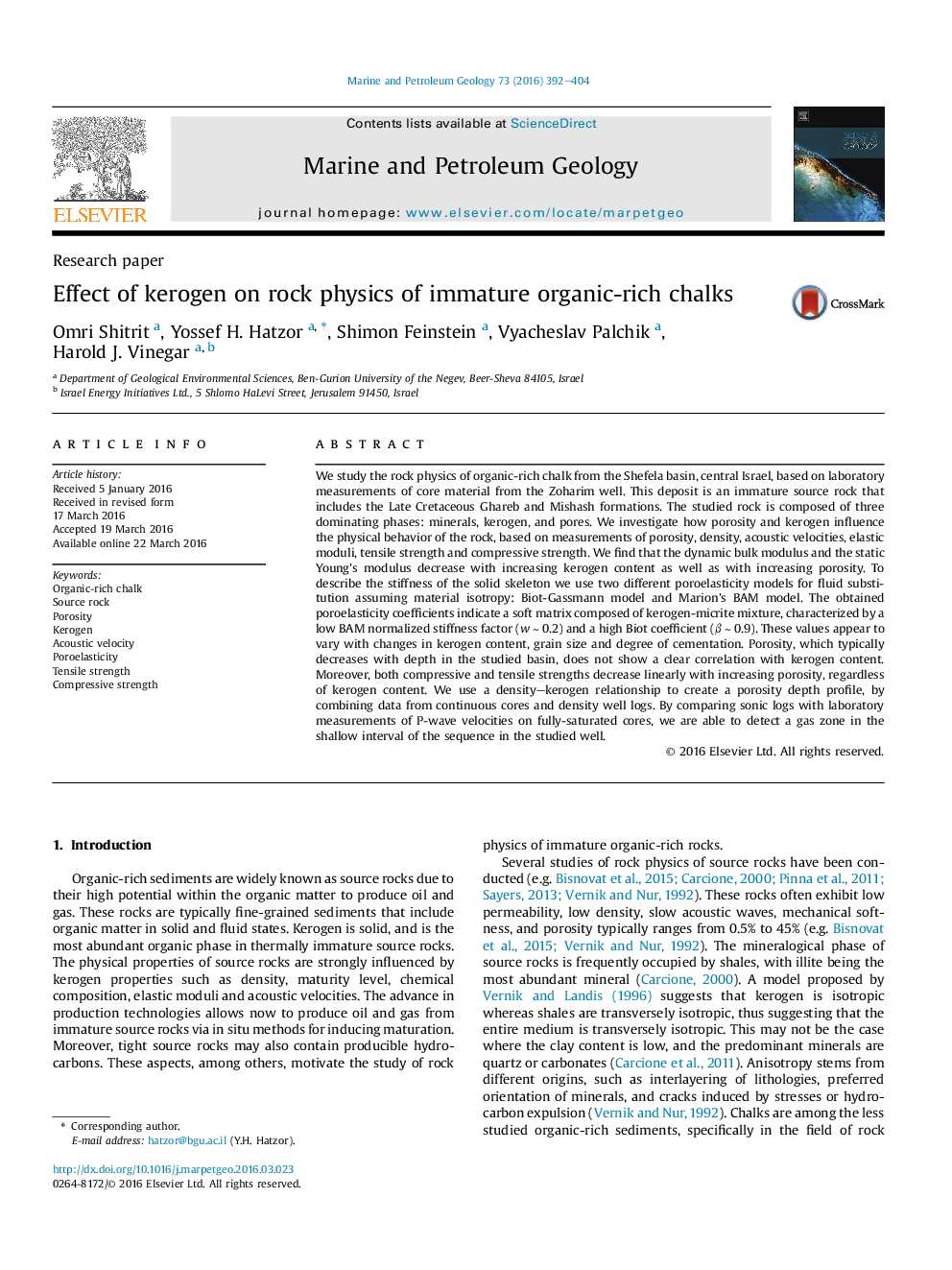| کد مقاله | کد نشریه | سال انتشار | مقاله انگلیسی | نسخه تمام متن |
|---|---|---|---|---|
| 6434817 | 1637154 | 2016 | 13 صفحه PDF | دانلود رایگان |
- Rock physics of organic rich chalk is studied using both field and laboratory measurements.
- The presence of kerogen in the rock matrix decreases the stiffness of the solid skeleton.
- Tensile and compressive strength are independent of kerogen content.
- Tensile and compressive strength are inversely related to porosity.
- No clear relationship between kerogen content and porosity is found.
We study the rock physics of organic-rich chalk from the Shefela basin, central Israel, based on laboratory measurements of core material from the Zoharim well. This deposit is an immature source rock that includes the Late Cretaceous Ghareb and Mishash formations. The studied rock is composed of three dominating phases: minerals, kerogen, and pores. We investigate how porosity and kerogen influence the physical behavior of the rock, based on measurements of porosity, density, acoustic velocities, elastic moduli, tensile strength and compressive strength. We find that the dynamic bulk modulus and the static Young's modulus decrease with increasing kerogen content as well as with increasing porosity. To describe the stiffness of the solid skeleton we use two different poroelasticity models for fluid substitution assuming material isotropy: Biot-Gassmann model and Marion's BAM model. The obtained poroelasticity coefficients indicate a soft matrix composed of kerogen-micrite mixture, characterized by a low BAM normalized stiffness factor (w â¼Â 0.2) and a high Biot coefficient (β â¼Â 0.9). These values appear to vary with changes in kerogen content, grain size and degree of cementation. Porosity, which typically decreases with depth in the studied basin, does not show a clear correlation with kerogen content. Moreover, both compressive and tensile strengths decrease linearly with increasing porosity, regardless of kerogen content. We use a density-kerogen relationship to create a porosity depth profile, by combining data from continuous cores and density well logs. By comparing sonic logs with laboratory measurements of P-wave velocities on fully-saturated cores, we are able to detect a gas zone in the shallow interval of the sequence in the studied well.
Journal: Marine and Petroleum Geology - Volume 73, May 2016, Pages 392-404
